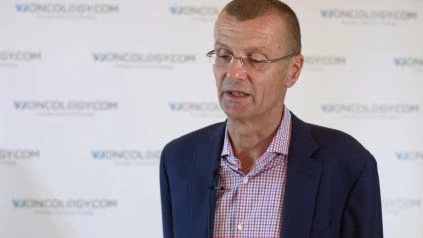“Peter Petzelbauer, MD, of the Medical University of Vienna, Vienna, Austria, discusses the next steps for his research and clinical implications in lymphangiogenesis and the treatment of melanoma at the 2016 World Congress on Cancers of the Skin (WCCS) and the Congress of the European Association of Dermato-Oncology (EADO) in Vienna, Austria. He starts by explaining that epithelial mesenchymal transition is when a cell which is hooked up between neighboring cells is able to lose the cellular compound and move to distant sites. He believes that if we can drive cells away from this epithelial mesenchymal transition to a poor mobile situation, but put them back to a proliferative phenotype, they can be targeted by conventional chemotherapy. This is because these cells, due to hypoxia, would not be able to invade. He explains that if a patient is treated with conventional chemotherapy, then hypoxia is induced. Hypoxia is one of the strongest drivers of epithelial mesenchymal transition. So, the problem is that conventional chemotherapy reduces the cell numbers but aids them to reach distant sites. Therefore he believes if you are able to bring the cell in a situation where it is not able to undergo transition to a mesenchymal phenotype, then the cells could be better targeted. This will then be combined with modern chemotherapies to be even more effective.
The next steps for lymphangiogenesis in melanoma – driving cells away from epithelial mesenchymal transition

